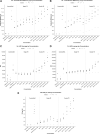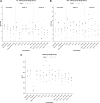Improving Lentiviral Transduction of Human Adipose-Derived Mesenchymal Stem Cells
- PMID: 35859364
- PMCID: PMC9808795
- DOI: 10.1089/hum.2022.117
Improving Lentiviral Transduction of Human Adipose-Derived Mesenchymal Stem Cells
Abstract
Lentiviral transduction of human mesenchymal stem cells (MSCs) induces long-term transgene expression and holds great promise for multiple gene therapy applications. Polybrene is the most commonly used reagent to improve viral gene transfer efficiency in laboratory research; however, it is not approved for human use and has also been shown to impair MSC proliferation and differentiation. Therefore, there is a need for optimized transduction protocols that can also be adapted to clinical settings. LentiBOOST (LB) and protamine sulfate are alternative transduction enhancers (TEs) that can be manufactured to current Good Manufacturing Practice standards, are easily applied to existing protocols, and have been previously studied for the transduction of human CD34+ hematopoietic stem cells. In this study, we investigated these reagents for the enhancement of lentiviral transduction of adipose-derived MSCs. We found that the combination of LB and protamine sulfate could yield comparable or even superior transduction efficiency to polybrene, with no dose-dependent adverse effects on cell viability or stem cell characteristics. This combination of TEs represents a valuable clinically compatible alternative to polybrene with the potential to significantly improve the efficiency of lentiviral transduction of MSCs for gene therapy applications.
Keywords: gene therapy; lentiboost; lentivirus; mesenchymal stem cell; transduction enhancer.
Conflict of interest statement
No competing financial interests exist.
Figures



References
-
- Lazarus HM, Haynesworth SE, Gerson SL, et al. Ex vivo expansion and subsequent infusion of human bone marrow-derived stromal progenitor cells (mesenchymal progenitor cells): Implications for therapeutic use. Bone Marrow Transplant 1995;16(4):557–564. - PubMed

